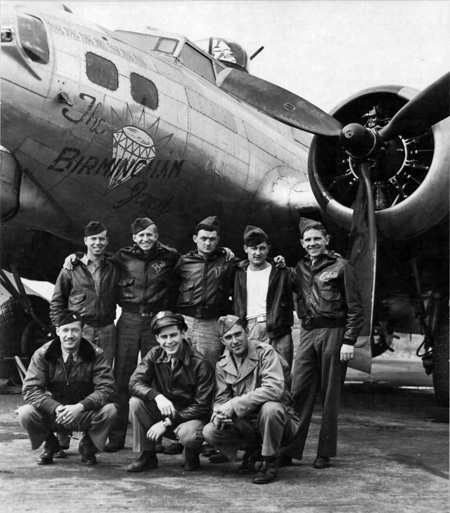Birmingham Jewel
The Birmingham Jewel (42-97678/LF-J) was a B-17G-25-VE "Flying Fortress" flown during World War II by 2nd Lieutenant Walter Smith as part of the 525th Squadron of the 379th Bambardment Group in the 8th Air Force.
The B-17 was constructed for Lockheed by the Vega Aircraft Corporation in Burbank, California in 1944. Smith named it for his wife, Jewel, and painted an emblem of a large diamond on the nose of the craft. Later in the war, the plane was piloted by Lieutenant William Webber.
The craft flew 128 missions in the European theater. During her final mission, the Birmingham Jewel was part of the largest Allied bombing mission into the German capital on February 3, 1945. Its target was a railyard outside the city. The line of bombers encountered flak from the enemy before reaching Berlin. Webber's plane was shot down at 11:02 AM near Rendsburg by three Messerschmitt Bf 109s.
Webber and three other crewmen (toggleer Staff Sergeant Raymond Weatherbee, radio operator Technical Sergeant Carl McHenry, and ball turret gunner Sergeant William Wells) were killed. Five others (copilot 2nd Lieutenant James Kiester, navigator 2nd Lieutenant Thomas Pickett, engineer-gunner Technical Sergeant Harold Francis, waist gunner Staff Sergeant William Scarffe, and tail gunner Sergeant Bennett Howell) survived the crash and were taken prisoner.
References
- Dorr, Robert (2011) Mission to Berlin: The American Airmen Who Struck the Heart of Hitler's Reich. Minneapolis, Minnesota: Zenith Press ISBN 9780760338988
